
For most of us, a bee sting is just a nuisance. We may experience a sharp pain, some swelling, itching, and redness at the site of the sting, but nothing serious. However, if you happen to be allergic to bee stings, or you get stung many times, bee stings can become problematic. They can even become life-threatening.
When a honeybee stings you, its stinger is left in your skin, ultimately killing the honeybee. Honeybees are the only type of bee that will die after they sting something. Wasps and other types of bees don’t lose their stingers, meaning they can sting you more than once.
If a bee stings you, it leaves behind a venomous toxin that can cause pain and other symptoms. Some are allergic to this toxin.

If you get stung by a bee, and experience any of the above severe reactions, get emergency medical help immediately. You may be experiencing anaphylactic shock, which is a life-threatening condition.
Home Remedies for Bee Stings
Unless you happen to be allergic to bee stings or are experiencing signs of a severe allergic reaction, you can treat most stings at home. If a honeybee stings you, remove the stinger immediately – this helps to curb the amount of toxins released into your skin. Wash the sting site with soap and water, then put ice on it to help reduce the swelling and venom absorption.
Most home treatments for bee stings aren’t supported by scientific research, but they have been passed down for generations. The following home remedies might help to relieve bee sting symptoms:
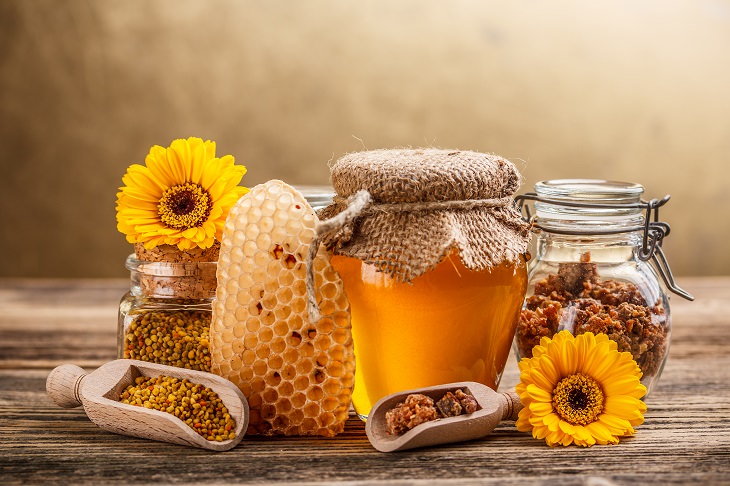
Honey may help with pain, itching, and healing. To treat a bee sting with honey, apply a small amount to the affected area. Cover with a loose bandage and leave it on for up to 4 hours.
Baking Soda
A paste made from baking soda and water can neutralize bee venom to reduce pain, swelling, and itching. Apply a thick layer of baking soda paste to the affected area, and cover with a bandage. Leave it on for around 15 minutes and re-apply as needed.
Apple Cider Vinegar
Vinegar may also help to neutralize bee venom. Soak the sting site in a basin of apple cider vinegar for around 15 minutes. You can also soak a bandage in the vinegar and then apply it to the sting.
Toothpaste
Some people suggest that alkaline toothpastes can help neutralize acidic honeybee venom. Simply dab a bit of toothpaste onto the affected area.
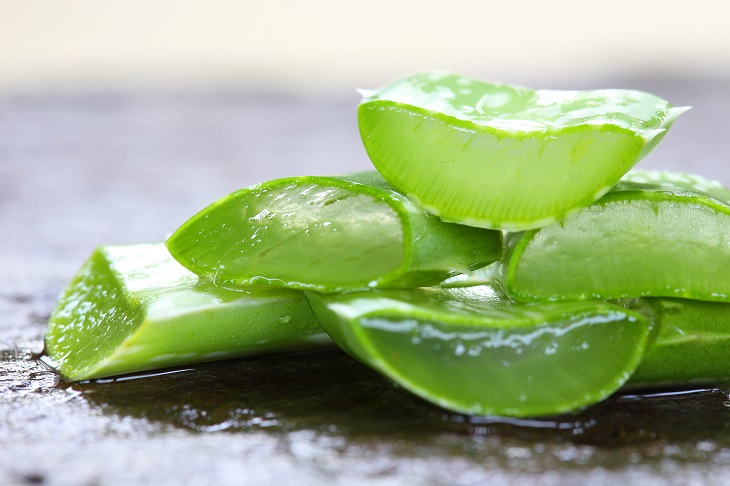
Aloe vera: Can help soothe the skin and relieve pain. If you have an aloe vera plant at home, break off a leaf and squeeze the gel directly onto the affected area.
Lavender essential oil: Has anti-inflammatory abilities and can help reduce swelling. Simply dilute the essential oil with a carrier oil, such as coconut or olive oil. Then dab a few drops of this mixture onto the sting site.
Tea tree oil: This is a natural antiseptic and can help to ease bee sting pain. Mix with a carrier oil and apply directly to the sting site.
Witch hazel: This is a tried-and-tested home remedy for insect bites and bee stings. It can help decrease inflammation, itching, and pain. Apply witch hazel directly to the bee sting.
Decreasing Your Risk of Being Stung
If you know that you will be spending some time outdoors, take these steps to reduce your risk of being stung by a bee:
• Don’t walk around barefoot.
• Leave beehives well alone.
• Cover your food.
• Don’t wear bright colors with flowery prints.
• Don’t drink from open soda cans.
Source: healthline
Images: depositphotos

Here's How to Make Pretty Opaque Window Frosting!
If curtains aren't really your thing, then why not give opaque window frosting a chance? Here's how to make your own at home.

Muscle Degeneration Starts with these 8 Early Symptoms!
Are you familiar with muscular dystrophy? Spot the early signs of this disease by being aware of these tips.

This Collection of Baking Charts is a Terrific Resource
Baking doesn't have to be difficult or complicated - all you need to do is follow the 8 fantastic charts that we've compiled in this post.
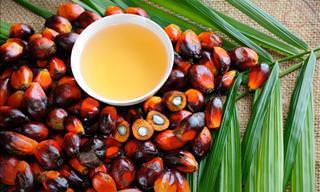
Why You Need to Avoid Palm Oil Right Away!
Palm oil is harmful to the environment. Here's what to do about it.

Suffer From Knee Pain? Here Are 6 Moves You Can Do
Banish knee pain today with these 6 exercises.

How Many Facts About Common Items Do You Know?
Do you know about these facts for common products?
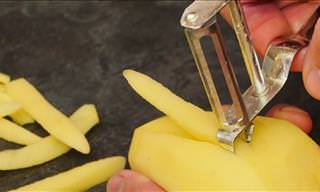 3:25
3:25
You May Not Be Using Your Peeler Properly...
The common kitchen peeler is a lot more versatile than you thought.
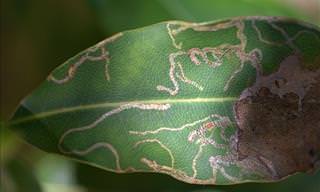
Natural Leaf Miner Pesticide that Won’t Kill Your Plants
Leaf miners are several species of insects that feed inside leaves in their larval stage and can be hard to get rid of...
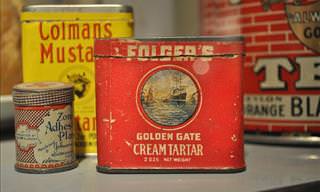
Cream Of Tartar Will Do Wonders For Your Health and Home!
If you've never heard of cream of tartar, you should find out how many different health benefits and uses this wonderful powder has!
 5:59
5:59
Animal Advice: How to Make Any Cat Like You
How to charm any cat you meet into liking you.
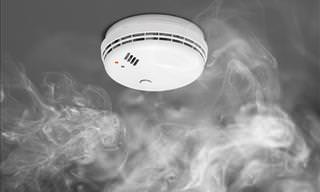
12 Amazing Home Fire Safety Tips From Firefighters
Don't let a fire get out of hand. Keep these essential 12 tips in mind.
 13:52
13:52
The Prettiest Colorful Indoor Plants to Grow at Home
Need a splash of vivid colors and fresh air in your home? Look no further than these beautiful indoor plants!
 8:30
8:30
A Full Guide to Cleaning Your Car's Interior
If you want a car that looks incredible on the inside, watch this video and follow these steps.
 17:03
17:03
How to Tell If the Soil in Your Garden Is Depleted
Over time, the soil in your garden will become depleted. Here's how you can tell if it's time to replenish the soil in your garden.

Changing Your Sleep Posture Can Do Wonders...
The advantages and disadvantages of each sleep position and how to improve it to minimize potential harm.
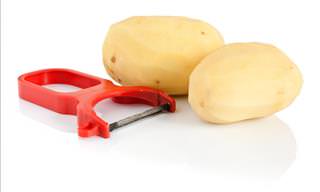 3:25
3:25
Whoa! I Never Thought of Using My Potato Peeler for This
Did you know there are more uses for your potato peeler? Find out!
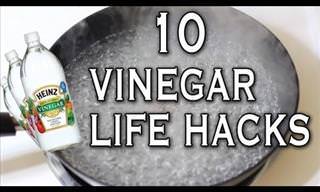 3:16
3:16
10 Uses for Vinegar That Even Surprised Us!
Vinegar can do many magical things! Here are 10 extremely useful things that it can be used for at home.

5 Terrific Ways to Use Carrot Oil to Treat Hair and Skin
Carrot oil has many other uses that can actually benefit your body much more.

8 Items In Your Kitchen You're Not Cleaning Enough
Are you forgetting to clean these kitchen items? Most people don't clean these germ-ridden places enough...

Your Sleeping Position Has a Big Impact on Who You Are
So which of these 7 positions is yours, and what does it say about you?

Ready to Take Cooking to the Next Level? Use These Hacks
Every chef has their own tricks for culinary perfection, and these food hacks will make sure you make the most of everything in your kitchen

9 Ways to Exercise for People Who Don't Like to Exercise
9 ideas for ways you can stay in shape even if you hate exercising.
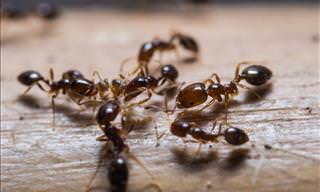
Ants Seem to Get Everywhere - But Here's How to Stop Them
Ants are amazing creatures, but what's more amazing is how they keep finding a way into your house! Here are some natural tips to help you get rid of them.
 15:47
15:47
41 Life-Saving Hacks to Protect Your Home and Belongings
Here are 41 clever safety hacks to help you protect your valuables and create smart hiding spots at home.
 8:26
8:26
You Must Know These Tips for Growing Healthy Plants
With these key tips, even complete beginners will be able to grow healthy and beautiful plants at home!

10 Great Survival Tips That We All Need to Know!
If you find yourself in a life or death situation it's important you know what to do. These 10 tips could save your life!
 3:58
3:58
Amazing! How to Make a Key That Opens Most Locks
Can you make a key that opens almost every lock?

Boost Your Happiness in These 22 Small, Easy Ways
Do these little things every day, to make you feel happy.
 9:32
9:32
Don't Let Cleaning Spoil Your Day! Use These Hacks Instead
Tired of cleaning? Cleaning difficult stains in no time with these essential cleaning hacks.

Why Wearing Flip Flops Is a Bad Idea For Your Health
What are the worst and the best types of footwear for summer weather? Here's a complete guide to summer footwear. Enjoy!
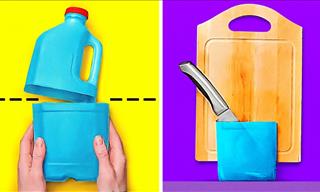 11:18
11:18
Learn Some Nifty New Tricks For Home Organization
How to keep your house from being messy? By staying house smart! This video is going to give you all those great tips you need to keep your house looking sharp.

How to Clean the House Quickly and Efficiently
There are plenty of cleaning hacks out there, but which ones actually work? Find out here!
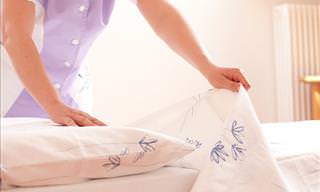
This is How Often You Should Change Your Bed Sheets
The majority of us don't change our bed sheets as often as we should, and that can cause serious health issues. Here's how often you should change them.

6 Tips to Take Care of Your Woolens This Season
Here’s how you can make sure your woolens last for many winters.
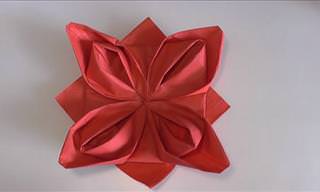 6:08
6:08
Fold a Napkin Into a Rose for a Unique Table Setting
Learn to set a table with napkin folding, giving a unique touch to your dinner table.

8 Useful Tips That Will Help You Tame Your Anger!
Being angry takes its toll on your health and relationships. Therefore, this video will show you 8 great ways to keep your anger in check.
 26:58
26:58
How to Catch a Scam Before It Catches You! - Expert Tips
Never fall for a scam again with these handy tips and tricks.
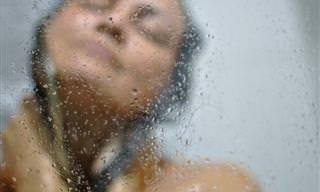
13 Mistakes You’re Making in the Shower!
Do you take a shower every day? If so, you're already making one of the 13 shower mistakes most people aren't aware of. Discover them all in the next article.
 10:13
10:13
10 Airport Secrets That Will Save You Time And Money
Here are the tricks, scams, and hidden travel hacks that every passenger should know before their next flight.
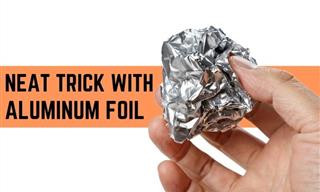
Putting Aluminum Foil in the Dishwasher - What Does It Do?
Try this neat dishwasher trick to make your silverware as good as new!
 4:01
4:01
Did You Know This Handy Trick?
How to divide paper into equal columns without having to calculate strange numbers. Simple life hack to help at school or in the office.
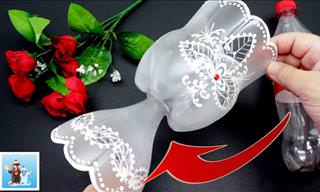 14:45
14:45
These Tricks will Transform Your Trash into Treasure!
This fun new method of reusing plastic bottles helps you make them into beautiful homes for all your plants

Do Natural Cleaning Hacks Really Work? We Have the Answer
We have personally tested 10 of the most common DIY non-chemical cleaning hacks, and we have some surprising results!

15 Smart Ideas That Redefined Creativity
These crafty geniuses took their ideas to unique heights!

Don’t Ruin Your Phone's Battery—Avoid These Charger Myths
Believing in these phone charging myths will be damaging to your device in the long run.

Who Knew Vick's VapoRub Was So Incredibly Versatile?
Is there any product in your medicine cabinet that is more versatile than Vick's VapoRub? Here are 7 innovative ways for you to use it.

7 Household Chores That You Should Do Less Frequently
Keeping up with our homes can take a lot of time and energy. But not all of them are worth your time and effort.
To enable your Ad-Free Subscription, please fill the fields below
Your subscription was successful, now you can enjoy an ad-free experience!! Note: To make sure you get no ads, please make sure to log in to your account. If you are logged in already, then refresh the page. The subscription can be cancelled at any time.


